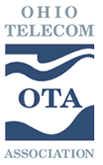The home of the future will have high-definition moving picture screens instead of windows, smart beds that track your sleeping patterns, landscape monitoring systems that use weather forecasts to tell you when to water your lawn, and door locks that can be operated with your smartphone.
These technologies were on display Wednesday outside the Statehouse on a three-story bus that also showcased automotive, health, wearable and city-planning innovations. The visit was part of the Smarter World Tour sponsored by the Ohio Telecom Association and NXP Semiconductors.
More than 170 demonstrations could be seen on the bus, in conjunction with the Ohio Telecom Association's 121st Annual Convention and Tech Show, which has been taking place at the Renaissance Columbus Downtown Hotel since Tuesday and ends today. The association represents traditional phone companies, such as AT&T and Verizon, which now offer broadband services that can make use of these new technologies.
"As people are moving through the transition of not having a landline, this is a preview of what all that technology can do," said Charles Moses, president of the association.
The technologies on display are all part of the "internet of things," a term used to describe devices that automatically connect to the internet over Wi-Fi and with internal sensors. This includes everything from ATM machines to weather monitoring devices to smart watches. It might one day grow to include all of a city's streetlights and vehicles, water and sewer systems, and even bus stops.
"What that could mean is that, say, you're an EMT and there's an emergency. You could communicate with the traffic lights and make sure all of the streetlights are green on a particular street to you can get there faster," said Scott Hughes, a strategic program manager for NXP Semiconductors. "Or on another level, if you're driving somewhere, you can find the fastest route because you'd know where there is construction or an accident or a lot of traffic."
NXP smart boards are inside most technologies that are considered to be part of the "internet of things."
"Our technology is embedded in a lot of people's cool stuff, and people don't know we're the reason it's cool," said Hughes, noting that fact is part of the reason for the national tour.
City planners, transportation specialists and policymakers were invited to learn about the technology, as was the public. While some noted it's important to understand the concepts behind these interactive technologies and their capabilities, not everything on the tour bus is ready or reasonable for common use.
"Only a small number of things here are practical in our everyday lives. For example, there's a heat-sensing camera, which is cool, but what am I ever going to do with it?" said Casey Ollen, 20, of Dublin.
His father, Carl Ollen, 50, also was at the showcase and found that while some of the sensory home features, like the window-TV screens and the smart bed, were just a luxury, other items on display could be useful.
"(Other) stuff, like the cameras to monitor your house or to be able to turn the heat down, that would be nice to have because I'm already doing it by hand," Carl Ollen said. "It would be nice to be able to control that stuff when I'm not at home."
Of course the house of the future comes with a price. Hughes said that while some devices, such as a lighting system, start at only $45, others, like a smart ceiling fan, can run up to $1,500. For those interested in making the switch, he recommends starting with the basics.
"If, say, your lights in your kitchen are going out, replace them with smart lights one by one. Then you can slowly build up."


